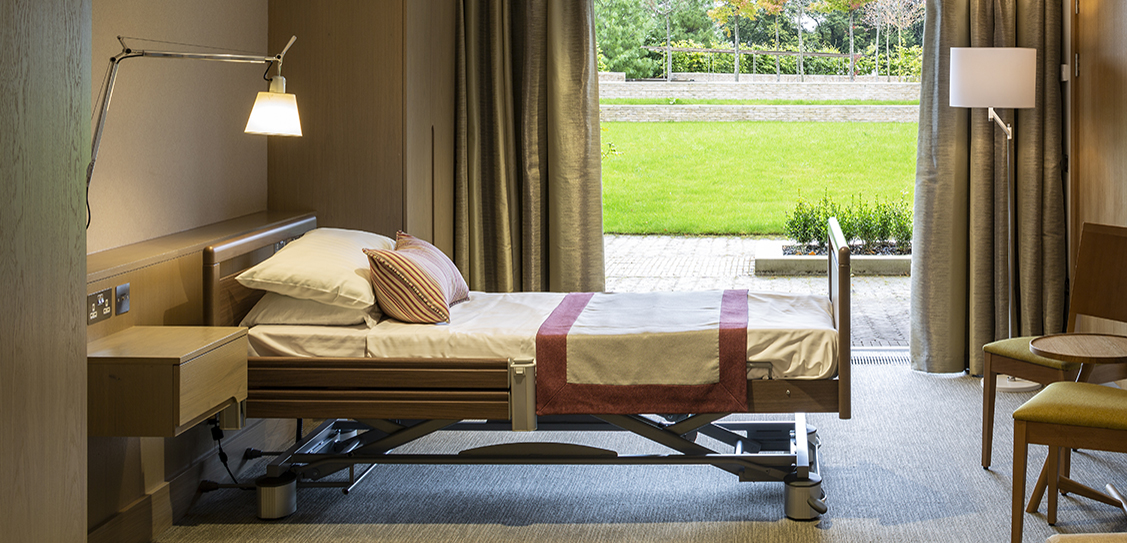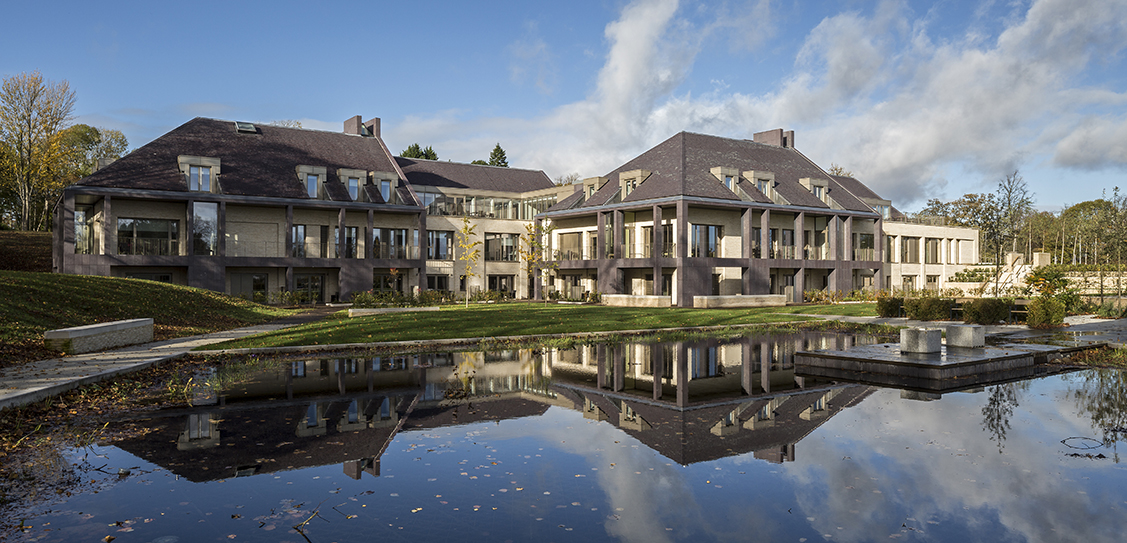The Prince & Princess of Wales Hospice, located in Glasgow’s Bellahouston Park, is the first palliative care facility in the UK to follow the Sengetun model of healthcare design; the Scandinavian-inspired concept promotes a home-from-home environment and also protects patient privacy. Designed by Ryder Architecture, the new £21m hospice replaces its former iteration at Carlton Place, the Georgian townhouse where the hospice was located for over 30 years.
The innovative Scandinavian model of Sengetun is based upon pioneering research which links the aesthetic design of a healthcare facility to patients’ wellbeing. This is achieved by putting the user first, offering patients the quality of life they deserve in a place that looks and feels like home, whilst the clinical and medical assistance remains in the background. The Prince & Princess of Wales Hospice therefore includes family bedrooms and large kitchens to maximise the time that loved ones can spend together, in addition to lounges, a sensory room, spa bathrooms and therapy rooms.
Ryder’s team, led by architectural director Alastair Forbes, consulted with long term patients as part of the design process and worked closely with staff to reduce walking distances, driving efficiencies that result in increased time for direct patient care.
While the hospice now provides care for young adults over 16 for the first time, the Sengetun model means it is also particularly supportive to patients with confusion, sensory impairments or dementia.
Despite bringing 21st century care to Glasgow, the building does not betray its roots at Carlton Place. Subtle references to the hospice’s history include alcoves for private reflection and discussion, an important feature of historic townhouses throughout the city. Additionally, the original front door was extracted to be the entrance point of the new scheme, guaranteeing continuity between the two buildings.



